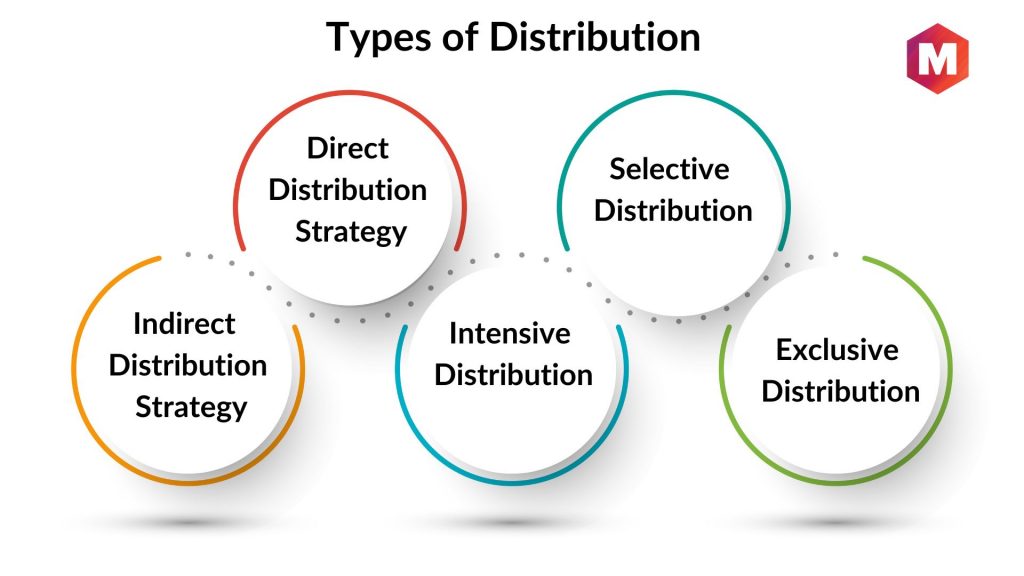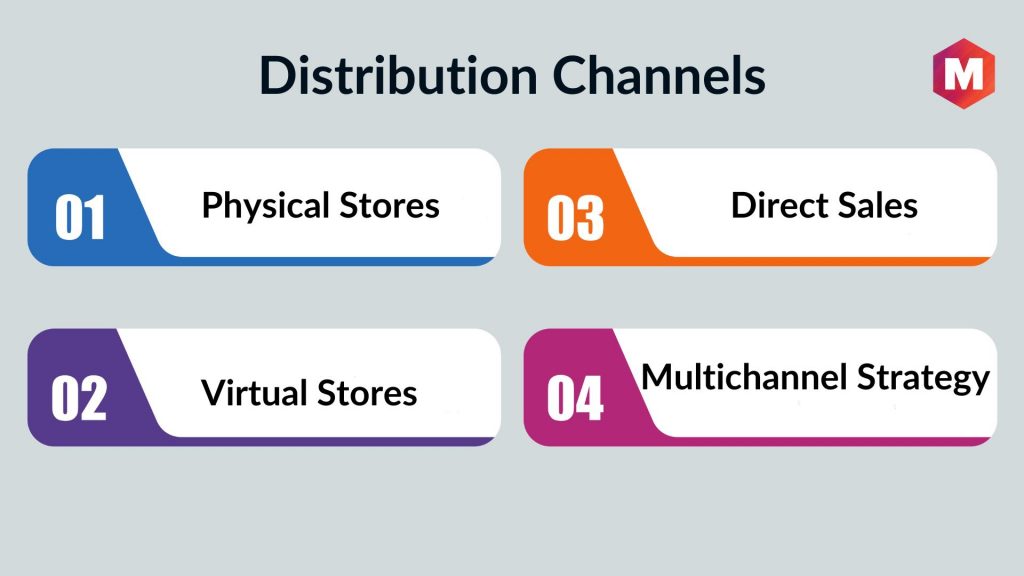In today’s fast paced world, distribution by a company can be an enormous competitive advantage to the company. Most companies target their customers far and wide. Because of the rising costs, companies are trying to expand in various markets so that they have a higher turnover and hence a higher margin.
To reach far and wide, you need the right distribution strategies in place. You cannot market a product and then not deliver the product to the end customer. This is a sheer loss of money as you waste money on your marketing strategy and the opportunity loss is also huge. Not to mention, the loss to the brand when the customer wants to purchase the product but cannot find it.
Thus, there is a lot of importance given to making proper distribution strategies for a company. This is also the reason why Place (Which majorly consists of distribution) is one of the major 4P’s of the marketing mix. Place is considered in case of products as well as services.
Table of Contents
What is a Distribution Strategy?
Distribution strategies are the ways in which a company distributes its products to customers. Distribution strategies can involve a number of different methods, including online sales and retail stores.
In business, many companies use a variety of different distribution strategies to help them get their products into the hands of consumers.
The most common ways that companies do this are through online sales and as many retail locations, both of which have their own benefits and drawbacks.
Distribution strategies are broken down into two main categories: direct and indirect.
Distribution strategy is mainly decided by keeping the top management in loop because it affects overall operations. This strategy can be summarised with 3 main points.
- How to get the product from the manufacturing point to the end customer.
- How to control costs and save time while executing the selective distribution strategy
- How to build a competitive advantage through distribution
On a macro level, there are two types of distribution.
1) Indirect Distribution Strategy
Indirect distribution strategies is when the product reaches the end customer through numerous channels in between. For example – The product goes from manufacturer to C&F, then to the distributor, then to the retailer and finally to the customer. Thus the chain is long.
2) Direct Distribution Strategy
Direct distribution strategy is when the company either directly sends the product to end customer or when the channel length is very less. A company selling on an e commerce portal or selling through modern retail is the form of Direct distribution.
Further more, distribution strategies are also decided based on the level of penetration that the company wants to achieve. This level of penetration is decided again by the remaining 3 P’s of the marketing mix – Product, price and promotions. However, based on the level of penetration, the distribution strategies vary as follows.
3) Intensive distribution
When the company is having a mass marketing product, then it uses intensive and exclusive distribution. Intensive distribution tries to cover as much of the market as it can. Typical FMCG and consumer durable products are best example of intensive distribution strategy. You can read this detailed article on Intensive Distribution.
4) Selective distribution
A company like Armani, Zara or any other such branded company will have selective distribution. These companies are likely to have only limited outlets. For example – In an urban city, Armani might have 2-3 outlets at the maximum whereas Zara might have 4-5. You can read this detailed article on Selective Distribution.
5) Exclusive distribution
If Zara has 4-5 outlets in a city, how many outlets would a company like Lamborghini have? Probably one in a region of 5-7 cities. That’s exclusive distribution for you. If a company wants to give a big region to one single distributor then it is known as exclusive distribution strategy. In some cases, a distributor might be appointed for a complete country. There would be no one other then that distributor operating in that company.
Benefits of Distribution Strategies
Distribution strategies are the key to getting your product out into the world. It’s crucial to know how you’re going to get your product onto shelves, but once you do, it’s important to know how you’re going to make sure it stays there.
Distribution strategies allow you to manage the flow of your product from its original creation through the entire supply chain—from raw materials, to manufacturing, to distribution and sales.
They also help you build relationships with retailers and consumers, so that they have a consistent experience with your brand.
What are Some Distribution Channels?
If you want to sell your products and services, you’re going to need a distribution channel (direct and indirect channels). Essentially, it’s a way to get your product or service out into the world and make sure it gets in front of the people who want it.
There are four main types of distribution channels:
Physical stores
This is the most common type of distribution channel. It includes things like grocery stores, department stores and online retailers. You can also use physical stores as part of a multichannel strategy.
Virtual stores
These are websites where people can buy things from your business. They include e-commerce sites like Amazon and Shopify and social media platforms like Facebook Marketplace and eBay.
Direct sales
This is when people come directly to your business location to buy something from you—for example, if you have an office where customers can come in person or if you go door-to-door selling something like vacuum cleaners or cleaning supplies.
Multichannel strategy
When you use multiple channels (like physical stores and virtual stores) together as part of one overall strategy that helps customers find what they need from your business at different times throughout their shopping journey—whether they’re looking for something in particular or just browsing.
Final Words!
Overall, distribution strategies depend a lot on the various products which the companies might have. A single company might have multiple product line and lengths, each with its own distribution strategy.
Some products, which are premium, might need selective distribution whereas others which are mass products, may need intensive distribution. The strategies for both types will be different. So, in the end, the distribution of a company is dynamic in nature and it contributes a lot to the competitive advantage of the company.
Also read – 7 steps to increase your distribution network.
Here is a video by Marketing91 on Distribution strategies.
Liked this post? Check out the complete series on Distribution




HI Hitesh
i run a Pr and Marketing company
at the moment i have a client has approached us for the services of opening new distribution channels ( locations)in malls for their watches an diamonds; at this point he is not asking for a consolation on where, he just needs our services to facilitate and negotiate for them, client named the exact locations he wants. i am not sure how to draft a contract for such services and how to charge for it, bare in mind this is a continuous efforts and time consuming, i am glad to make it happen for the client however don’t wanna over charge, neither over promise since some variables and given in some situations could be out of my control. let me know what you think..
appreciate your opinion on it.
Regards
Sahar Mahboobi
Is it possible to forecast the cost of such an operation? I think it would roughly be possible to calculate the cost vs returns. If you have to finalise on one location / distributor, you have to meet 10 of them. So what is the cost in your country to meet those 10 people. Add 30% margin on that (for any unforeseen costs) and then quote the customer. I think this will fill your pockets and keep the customer happy too. And keep payment terms 100% advance.
dis distribution strategies isn’t it include franchising ? if not including den how ? explain the concept “franchising” under distribution strategies.
Franchising would fall under exclusive distribution. Because when you open a franchise, you are opening an exclusive distribution contract with the company.
Greeting Hitesh
How would you use a distribution strategy to increase distribution in Traditional Retail Stores such as mom & pop stores for a global brand?
Hii. 1) create a pull in the market so that the traditional retail stores WANT to tie up with u. These traditional stores have a lot of SKU’s to deal with and very less space. They are not like modern retailers or hyper markets which tie up with all brands under the sun. 2) create a channel sales pipeline to penetrate the market better – https://www.marketing91.com/how-to-create-a-strong-channel-sales-pipeline/
What may cause and organization to intensify its distribution policy
hello
what are the strategies to use on the delay of distributing a certain product to various depots
what kind of of sales/ distribution method would you recommend for a set-up boxes/decoders in an African market
Hello,
What advice would you give a business that owns a warehouse; they provide storage for the client products, package and ships the products to the clients end costumer?
Your website was really super helpful with regards to learning some concepts on International Marketing I had to present in my report as part of an exam. Thank you so much for writing this !